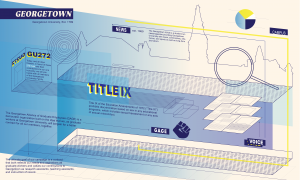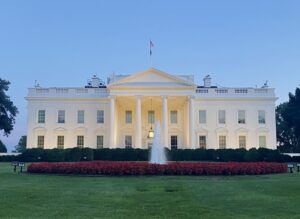D.C. Health’s new model for COVID-19 vaccine distribution will make a larger population eligible for doses, as D.C. becomes one of the most efficient U.S. territories to inoculate its residents.
The distribution plan will prioritize residents with chronic conditions including asthma, obesity, heart failure, habitual smoking, and Down Syndrome and make an estimated hundreds of thousands within D.C. eligible for vaccinations. As concerns grow regarding inequitable distribution in D.C., more vaccine appointments are being created for residents of Wards with high COVID-19 numbers.
While people without high body mass indexes (BMI) or preexisting medical conditions would not have access to vaccines in most other states, D.C. is attempting to increase its vaccinated population by making more D.C. residents eligible, even while COVID-19 vaccines remain scarce.
D.C. ranks 48th out of 51 U.S. states (including the District of Columbia) in total number of residents vaccinated. This number, however, is misleading as the city has a relatively small population just shy of 710,000. More importantly, D.C. ranks sixth in percentage of population that has completed one dose of the COVID-19 vaccine. D.C. comes after Alaska, West Virginia, North Dakota, Connecticut, and South Dakota, having vaccinated 5.8 percent of its population with the first dose.
D.C. ranks third in the percentage of population to complete both doses of the vaccine, after only Alaska and West Virginia. Alaska has vaccinated 1.70 percent of its residents with both doses of the vaccine, while both West Virginia and D.C. have vaccinated 1.5 percent of their populations.
While the success of West Virginia’s vaccination rate has been accredited to their independent distribution system that utilizes 250 smaller pharmacies, D.C. partnered with CVS and Walgreens along with 49 states to administer the vaccine.
D.C. Wards 5, 7, and 8 have been hit hardest by the COVID-19 pandemic and consist largely of predominantly Black neighborhoods. As of Jan. 15, Ward 8 had 162 deaths, reaching the highest death county in the District. Ward 7 has had 128 deaths due to COVID-19, and in Ward 5, 144 deaths. Black Washingtonians, who make up about 45 percent of the D.C. population, have constituted approximately 75 percent of COVID-19 deaths. The second highest number of deaths has consisted of Hispanic and Latinx individuals, who make up over 11 percent of the population, with 13 percent of D.C. fatalities.
Despite disproportionate death rates in D.C., vaccine distribution has thus far favored Wards with fewer deaths. D.C. Health released data showing that Wards 1, 4, 5, 7, and 8 have had the fewest COVID-19 vaccine appointments since Jan. 11, while 2,465 residents in Ward 3 got appointments to get a dose of the vaccine. Comparatively, only 197 people in Ward 7 and 364 in Ward 5 received appointments.
Following concerns of inequitable distribution, D.C Health announced that over 4,000 vaccination appointments would be offered only to seniors from Wards 1, 4, 5, 7, and 8. As of Jan. 18, another 1,436 appointments have been created for all D.C. residents over the age of 65 or working in a healthcare profession within the city.
D.C. Health also released a new distribution plan to increase the population eligible for vaccination based on medical history, including conditions like obesity, asthma, and high blood pressure, which will reduce the impact of COVID-19 for those most at risk. The vaccine is expected to become available for a larger percentage of D.C. residents in February.
As obesity is one of the greatest risk factors for those who contract the virus, D.C. Health hopes that allowing people over a BMI of 25 earlier accessibility to the vaccine will save lives. Opening the vaccine to people over a certain BMI, a condition prevalent in poorer communities, would also make vaccine distribution more equitable across economic classes.
While D.C.’s vaccine distribution plan is evolving to consider equitable distribution, some health professionals are concerned the standards of eligibility for the vaccine are too wide. Considering a limited number of vaccines have been released to U.S. states and the District, below the former Trump administration’s goal of 20 million vaccinations by January, concerns remain that D.C. is not prepared to move to a broader tier of vaccine eligibility.
Considering the average BMI of an adult male in America is 29, some health care experts argue the new distribution plan should only allow people with a BMI over 40, which poses significant danger to an infected patient, or 30, which still presents risk, to receive the vaccine.
In a meeting with the D.C. Council, D.C. Health Director LaQuandra Nesbitt maintained that as scientific data is still confirming risk factors for COVID-19, it is better to release vaccinations to as many residents with potential health complications as possible.
“We don’t want to make an erroneous decision to exclude them,” Nesbitt told the Council.
Broadening the population eligible for vaccinations also requires evaluating the capacity of D.C.’s healthcare system. D.C. is currently only vaccinating seniors over 65 and health care workers, but the logistical process has been flawed. Seniors have struggled to register online and appointments remain in short supply. With not all D.C. seniors able to secure an appointment yet, critics suggest it is too soon to begin vaccinating a wider range of residents.
Although increasing the number of people allowed to be vaccinated might put even more pressure on D.C.’s vaccination system, D.C. Health maintains that reducing barriers to the vaccine will provide the most efficient and equitable access. The updated distribution plan may be criticized, but D.C. remains one of the more effective U.S. territories to quickly vaccinate its population.
“As a health department, as a city, we have to strike that balance of ensuring the right people are getting in line without creating barriers for them,” D.C. Health vaccine director Ankoor Shah said in the Washington Post.





